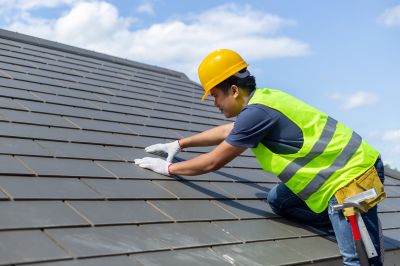Top-Rated Products For Seamless Roof Installation Projects
Browse through the most trusted materials and tools that help achieve smooth, efficient roof installation results.
 Roof installation projects require a variety of specialized products to ensure durability, safety, and proper functionality. From foundational materials to finishing components, selecting the right products can significantly influence the success of the installation. Commonly used items include roofing underlayment, flashing, fasteners, sealants, and ventilation components, each serving a specific purpose in creating a weather-resistant and structurally sound roof. Understanding the different types of products available can help homeowners and contractors make informed decisions tailored to their specific needs.
Roof installation projects require a variety of specialized products to ensure durability, safety, and proper functionality. From foundational materials to finishing components, selecting the right products can significantly influence the success of the installation. Commonly used items include roofing underlayment, flashing, fasteners, sealants, and ventilation components, each serving a specific purpose in creating a weather-resistant and structurally sound roof. Understanding the different types of products available can help homeowners and contractors make informed decisions tailored to their specific needs.
Top Overall Option
Roofing Underlayment
Roofing underlayment serves as a critical protective layer beneath the primary roofing material. It provides an additional barrier against water infiltration and helps prevent damage caused by moisture, wind-driven rain, and ice. High-quality underlayment is compatible with various roofing types and climates, offering flexibility and reliable performance. Proper installation of underlayment can contribute to the longevity and integrity of the roof system, making it an essential component in many roofing projects.
Types of Products For Roof Installations
Roofing Underlayment
A moisture-resistant layer installed beneath the roofing material to provide additional protection against water intrusion.
Roofing Nails and Fasteners
Specialized nails and fasteners designed to securely attach roofing materials to the roof deck.
Roof Flashing
Metal or other material strips installed around chimneys, vents, and roof edges to prevent leaks.
Sealants and Roofing Caulk
Flexible sealants used to seal joints and seams, preventing water penetration and air leaks.
Roof Vents and Attic Ventilation
Components that promote air circulation in the attic space to regulate temperature and moisture levels.
Roofing Membranes
Waterproof membranes that provide an additional layer of protection for flat or low-slope roofs.
Roofing Adhesives
Specialized adhesives used to secure roofing components or attach insulation layers.
Roof Edge Metal
Metal strips installed along the edges of the roof to provide a finished look and protect against weather damage.
Roofing Clips and Hangers
Support hardware used to secure roofing materials or components in place.
Insulation Boards
Insulation panels placed beneath the roofing deck to improve thermal efficiency.
Skylight Flashing Kits
Pre-cut flashing components designed specifically for skylights to prevent leaks.
Roofing Screws
Corrosion-resistant screws used for attaching roofing materials securely.
Gutter and Drainage Components
Systems and accessories designed to manage water runoff from the roof.
Roofing Edge Caps
Protective caps used at roof edges to prevent damage and weather infiltration.
Roofing Tapes
Adhesive tapes used for sealing seams and joints in roofing materials.
Popular Choices
Widely used as an extra layer of protection beneath roofing materials, available in various types.
Commonly selected fasteners for attaching shingles, metal panels, and other roofing components.
Essential for sealing around chimneys, vents, and roof edges to prevent leaks.
Popular for ensuring proper attic ventilation and airflow.
Frequently used to seal joints, seams, and penetrations in roofing systems.
Commonly chosen for flat roofing applications to provide waterproofing.
Preferred for their durability and secure fastening of various roofing materials.
Popular for directing water away from the roof and foundation.
Trending for ensuring waterproof installation of skylights.
In demand for improving thermal insulation in roofing assemblies.
Often selected to enhance roof edge protection and aesthetics.
Popular for sealing seams and preventing leaks in roofing systems.
When choosing products for roof installation, it is essential to consider compatibility with the roofing materials, climate conditions, and the roof’s design. High-quality underlayment, for example, provides an extra layer of protection against water infiltration, while durable fasteners ensure secure attachment of roofing materials. Proper flashing installation prevents leaks around chimneys, vents, and roof edges, and ventilation products help regulate temperature and moisture levels within the attic space. Ensuring that all components meet safety standards and are suitable for the project's scope can contribute to a successful and long-lasting roof.
The selection process also involves evaluating ease of installation, availability, and the overall cost-effectiveness of products. Many manufacturers offer a range of options, from basic essentials to advanced solutions with enhanced features. Consulting product specifications and reviews can assist in identifying products that align with project requirements. Proper planning and the use of reliable, compatible products can lead to a more efficient installation process and a roof that performs well over time.
In addition to individual components, comprehensive roofing kits are available that include multiple essential items, streamlining the procurement process. Whether undertaking a small repair or a complete roof replacement, understanding the variety and purpose of these products is key to achieving a durable and effective roof system.
Key Buying Considerations
- Compatibility with existing roofing materials and structure.
- Weather resistance and durability suited to local climate conditions.
- Ease of installation and availability of installation instructions.
- Material quality and compliance with safety standards.
- Compatibility of different products when used together in a roofing system.
- Cost-effectiveness balanced with quality and longevity.
- Resistance to corrosion, especially for metal components.
- Flexibility and ease of handling during installation.
- Warranty options and manufacturer support.
- Specific requirements for roof slope and design features.
- Environmental conditions such as wind, rain, snow, and temperature fluctuations.
- Availability of replacement parts and accessories.
- Compatibility with roofing aesthetics and architectural style.
- Potential for future repairs or upgrades.
- Local building codes and regulations compliance.
